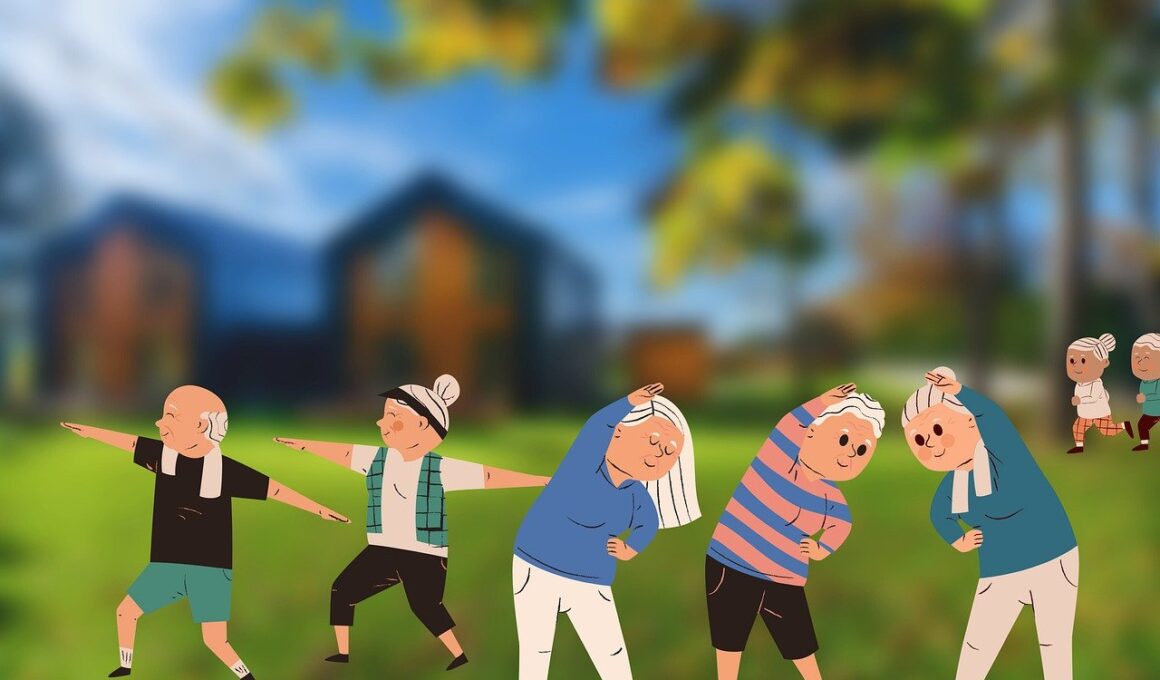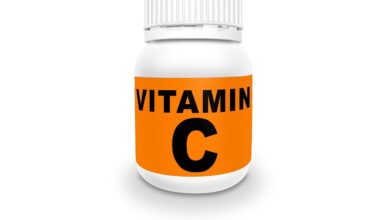Integrating Functional Fitness with Physical Therapy
Integrating functional fitness with physical therapy promotes overall health, especially as we age. Functional fitness emphasizes exercises that mimic daily activities, thereby enhancing mobility, strength, and endurance. This approach is particularly beneficial for seniors, providing the necessary tools to perform daily tasks efficiently. Physical therapy often includes these functional movements. By integrating functional fitness techniques, therapists can create tailored exercise programs. This customization focuses on an individual’s specific needs, ensuring a holistic recovery path. Furthermore, strength training elements within functional fitness improve muscle mass, resulting in better balance and coordination. A well-rounded program incorporating functional exercises helps in reducing fall risks, which is crucial for older adults. For effective integration, therapists can utilize various methods, including resistance bands, light weights, and body-weight exercises. Regular assessment of individual progress is vital as it allows for adjustments to the program when necessary. Additionally, continual motivation and encouragement from therapists or trainers can enhance the commitment to fitness and wellness. Therefore, blending functional fitness with physical therapy fosters not only physical improvement but also emotional well-being, thus equipping individuals with the tools to navigate their daily environments confidently.
Physical therapy primarily focuses on rehabilitation, promoting recovery from injuries or surgeries. Traditional methods often emphasize specific targeted muscles but can overlook the critical aspect of functional movement. This is where functional fitness comes into play. By engaging in exercises that replicate real-life activities, patients can enhance their recovery speed and effectiveness. Implementing functional fitness can aid in better joint stability, important for daily movements such as walking or climbing stairs. For instance, the squat and lunge are foundational exercises that reinforce neuromuscular coordination and strength. In this scenario, therapists can gradually integrate challenging tasks into patients’ routines, thus ensuring functional adaptability. It fosters a collaborative environment where patients feel empowered to take part actively in their rehabilitation journey. Furthermore, group sessions can encourage social interaction, reducing feelings of isolation that often accompany aging and physical limitations. Individuals can share experiences and support one another through challenges, cultivating a community of resilience. Continuous education about alternate methods strengthens patient accountability and encourages commitment toward a healthier lifestyle. Physical therapy should not be viewed in isolation but rather as an evolving framework, integrating various fitness principles to foster comprehensive recovery.
As patients progress in their rehabilitation, the transition towards independent functional fitness becomes paramount. Understanding how to incorporate movements into their daily routine encourages sustained activity and engagement. Therapists can guide clients through exercises that mimic their specific daily activities, facilitating a smoother adaptation to changing dynamics. This includes teaching strategies that allow for lifting, bending, and stretching safely. A focus on building foundational strength ensures that as individuals grow stronger, they encounter less resistance in completing daily tasks, thus promoting confidence. Monitoring and adjusting the program through regular evaluations can identify strengths and remain adaptable. Core stability is often a focal point, as a strong core supports almost every movement in our daily lives. Engaging in exercises that enhance abdominal strength can transform an individual’s functionality and mobility significantly. Moreover, flexibility exercises that are associated with functional fitness enhance recovery. Targeting overall body flexibility not only reduces the risk of injury but also aids in preventing joint pain. As flexibility improves, patients often discover new levels of confidence regarding movement and task completion, ultimately resulting in a significant shift in their quality of life.
The Role of Technology in Functional Fitness
Integrating technology into functional fitness can provide significant value in tracking progress and facilitating engagement. Numerous applications and devices collect data about physical activities that motivate users to stay active. Wearable devices can monitor heart rates, steps, and exercise patterns, providing visual feedback on daily accomplishments. This information becomes instrumental when setting fitness goals, as users can see tangible results based on their efforts. Furthermore, these technologies offer interactive elements, allowing users to connect with fitness communities, share achievements, and even challenge friends. Telehealth options can also be utilized in physical therapy, enabling practitioners to reach clients remotely and provide personalized advice. In addition to connecting clients with their therapists, technology can broaden access to educational resources. Online classes dedicated to functional fitness cover various topics, from strength training to flexibility, enhancing home-based workouts. Incorporating a mix of these technologies into functional fitness programs empowers patients, making fitness a shared responsibility. Continuous engagement ensures individuals remain motivated and invested in their wellness journey, thus improving adherence rates. Ultimately, the fusion of traditional therapy and technology creates a more balanced approach to functional fitness that harnesses the best of both worlds.
Nutrition represents another critical component that integrates seamlessly with functional fitness and physical therapy. Proper nutrition fuels the body, allowing for optimal performance during workouts and rehabilitation sessions. Encouraging a balanced diet rich in vitamins, minerals, and proteins supports muscle recovery and overall health. Nutritionists can collaborate with physical therapists to develop personalized meal plans that align with fitness goals. Additionally, hydration plays a vital role in recovery. Patients are often reminded to consume adequate fluids, particularly after exercise, to support the body’s natural functions effectively. Supplementation may also be explored, under professional guidance, to address any deficiencies that could hinder progress. Holistic approaches that combine nutrition with functional fitness lead to enhanced performance outcomes. For example, ensuring calcium and vitamin D intake improves bone health, reducing fracture risks as individuals continue to engage in physical activities. Education about snacking on cancer-fighting foods can significantly improve energy levels and recovery speed. Ultimately, understanding the synergy between functional fitness, physical therapy, and nutrition ensures a comprehensive plan for improving physical independence and quality of life. Therefore, dietary coaching cannot be overlooked when providers aim to optimize rehabilitation efforts.
Community Engagement and Functional Fitness
The role of community engagement in functional fitness creates a supportive environment where individuals can thrive. Programs designed to encourage group participation foster camaraderie, making fitness more enjoyable. These group sessions can include activities tailored specifically for various age groups and physical abilities, ensuring inclusivity. Social interactions during shared physical activities not only improve motivation but also establish accountability, ultimately leading to a greater commitment to personal fitness goals. Furthermore, fostering relationships among participants creates an encouraging community where sharing experiences and struggles is common. Various organizations often sponsor events or classes that promote active aging and functional fitness, enhancing community connections. Research indicates that individuals engaged in group activities experience increased adherence to fitness routines, contributing to sustained physical health. Establishing friendships and peer support provides emotional benefits, ultimately leading to reduced feelings of insecurity or isolation. Hence, offering regular workshops focused on functional fitness can nurture community resilience. Local alliances can encourage exploration of new fitness trends or educational strategies that can be shared. This sense of togetherness promotes overall well-being, paving the way for healthier lifestyles that can positively impact participants for years.
In conclusion, integrating functional fitness with physical therapy embodies a holistic approach to wellness as we age. This methodology enhances physical function by preparing individuals for activities they encounter daily. A well-designed program focusing on functional exercises has numerous benefits, including improved strength, balance, and confidence. Importantly, such integration addresses specific patient needs while leveraging the latest technology and community support. Recreational and social components ensure participants remain engaged and motivated, cementing long-term habits that foster independence. Collaboration among healthcare professionals across disciplines strengthens the effectiveness of individualized treatment plans, ultimately resulting in better health outcomes. Working together enables the synthesis of knowledge from physical therapy, nutrition, technology, and fitness principles. It emphasizes that effective care requires a team-oriented mindset to drive client progress and increase quality of life. As reflection points emerge, practitioners can recognize the significant changes resulting from this integration, reinforcing the understanding that fitness does not cease with age. Instead, increased activity levels provide richer life experiences and greater engagement. The future of functional fitness in physical therapy certainly holds tremendous potential to cultivate resilience and empower older adults to embrace an active lifestyle.


